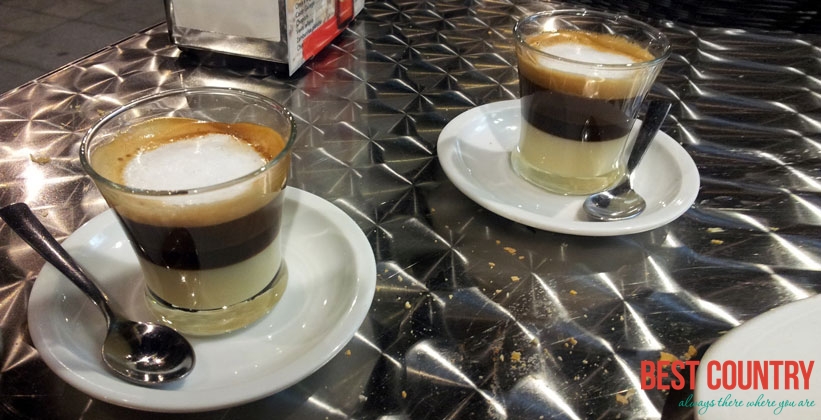Coffee is an essential part of Spanish culture, especially in the mornings. When ordering a Spanish coffee it is important to understand the different coffees that are available.
Coffee and Tea in Spain
Depending on how you take your coffee, you will need to order one of the following:
 Café con leche – This is the most popular form of coffee in Spain, particularly at breakfast time. It is essentially an espresso with plenty of milk.
Café con leche – This is the most popular form of coffee in Spain, particularly at breakfast time. It is essentially an espresso with plenty of milk.
Café cortado – This coffee has only a small amount of milk added.
Café solo - This is black coffee and what you will receive if you just ask for ‘un café’. To ensure you get milk ask for either a café cortado or a café con leche.
Café manchado – This is a less popular option as it contains more milk than coffee, almost to the point of being a coffee milkshake.
Café descafeinado – As the name suggests this is decaffeinated coffee.
Café con hielo - In the summer the Spanish will often have café con hielo, which is hot black coffee accompanied by a glass of ice cubes. Once the coffee has been sweetened to the desired level it is poured over the ice cubes to provide a refreshing drink.
Carajillo – This is coffee with a generous splash of Spanish Brandy. It is generally drunk after the evening meal, but is also frequently ordered by locals first thing in the morning to kick start the day.
Tea
The Spanish are not traditional tea drinkers; you can order a tea con leche at a bar or café, but it is unlikely to be of any quality.
Té con limón is slightly more popular in Spain, and indeed marginally more palatable.
Having said that, there is a range of tea infusions that are gaining in popularity, the leaves for which can be bought from roadside stalls and street markets:
Té Negro - Black tea.
Té Rojo - Red tea.
Té Verde - Green tea.
Té de Fruta - Fruit tea.
Manzanilla - Camomile tea.
Menta Poleo - Mint tea.
Tila - Lime blossom tea.
The availability of tea in the Province of Granada is largely due to the heavy Moroccan influence. This influence has created something of a specialised tea culture in and around the Arabic Quarter of Granada City.
The Arab tea houses are known as ‘teterías’, wherein can be found numerous different flavours of tea to choose from. It is also possible to buy packets of the most common teas on the streets surrounding these teterías.